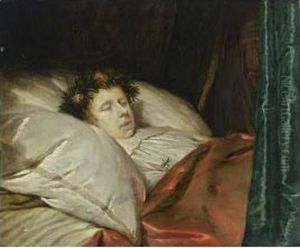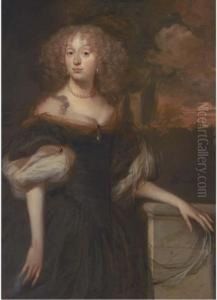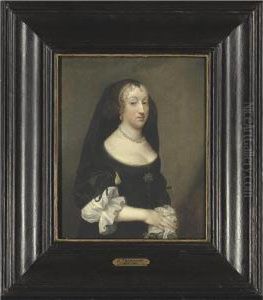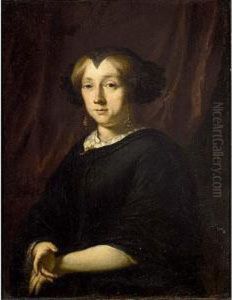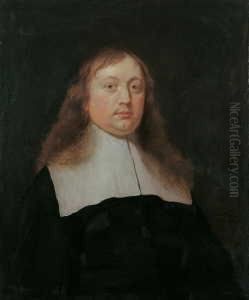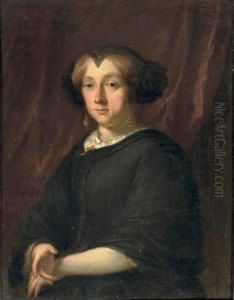Pieter Van Anraadt Paintings
Pieter van Anraadt was a Dutch Golden Age painter, born in 1635. Although not as widely recognized as some of his contemporaries, Van Anraadt's work provides a fascinating glimpse into the artistic and cultural milieu of the 17th century in the Netherlands. His life and career are emblematic of the era's painters, who often navigated the challenges of patronage, artistic innovation, and the evolving tastes of their time.
Van Anraadt specialized in portraits and religious scenes, showcasing a keen eye for detail and a profound ability to capture the essence of his subjects. His portraits, in particular, are noted for their depth of character and the subtle interplay of light and shadow, reflecting influences from more prominent Dutch masters of the period, such as Rembrandt. Despite the scarcity of biographical details about his life, it is known that Van Anraadt worked in various Dutch cities, including Utrecht and Deventer, which were vibrant centers of art and culture during the Dutch Golden Age.
Throughout his career, Van Anraadt navigated the competitive landscape of the Dutch art market, a testament to his skill and adaptability. His works were appreciated for their meticulous attention to detail and the emotional depth they conveyed, qualities that endeared him to his clients and helped secure his place in the annals of Dutch painting. Unfortunately, like many of his peers, Pieter van Anraadt's name has not endured as prominently in the historical record, overshadowed by the towering figures of the era.
Pieter van Anraadt died in 1678, leaving behind a modest but significant body of work that continues to attract scholarly attention and admiration. His paintings, preserved in museums and private collections, serve as valuable windows into the Dutch Golden Age, offering insights into the era's artistic trends, social norms, and cultural values. Through his art, Van Anraadt contributes to the rich tapestry of 17th-century Dutch painting, embodying the technical skill, aesthetic sensibility, and humanist spirit that define the period.

